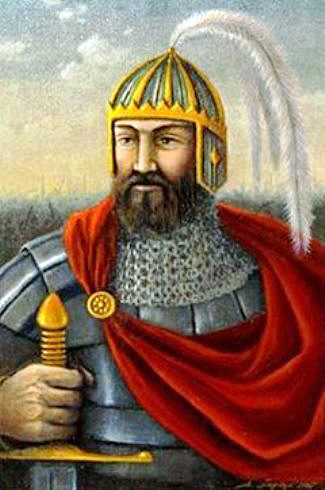| lithaz.org: home & art/culture events organizations publications |
| 7/20/2015 |
Lithuanian history:Traidenis
|
|
After the murder of King Mindaugas in 1263, Lithuania went through a period of unstable rule. Treniota, one of the participants in Mindaugas' murder was first to take power, but was himself killed in 1265. Mindaugas' son Vaišvilkas (a.k.a. Vaišelga) returned from abroad and ruled from 1265 to 1268, when he decided to return to monastic life and turned power over to his brother-in-law Shvarno. Shvarno ruled for a year before he died in 1269. In 1270 Traidenis, Duke of Kernavė, gained supreme power and ruled Lithuania until his death in 1282. The manner by which Traidenis assumed power is not known. Was he related to Mindaugas and could claim inheritance rights or did he take power by force has not been answered. Traidenis was a very capable warior and he defended ethnically Lithuanian lands from all enemies. In his retaliatory military campaigns he crisscrossed lands occupied by the German Order of Teutonic Knights in Prussia and Livonia and by Mazovian, Polish, and Volhynian rulers. He neither sought foreign allies nor did he covet their lands. Both Samogitians of western Lithuania and Yotvingians of southern Lithuania found a friend in Traidenis and obeyed him. He also welcomed Prussian natives fleeing from German occupation and resettled them on ethnically Baltic lands. During the 12 years of his rule, Traidenis stopped the territorial losses of the Lithuanian state created by King Mindaugas and passed a stronger Lithuania to his successors.
Traidenis is believed to have had three sons Daumantas, Butigeidis, and Butvydas, and a daughter Gaudemunde Sofia. In 1270 Traidenis' daughter married Duke Boleslav of Mazovia. (Click here to read more history.) |
